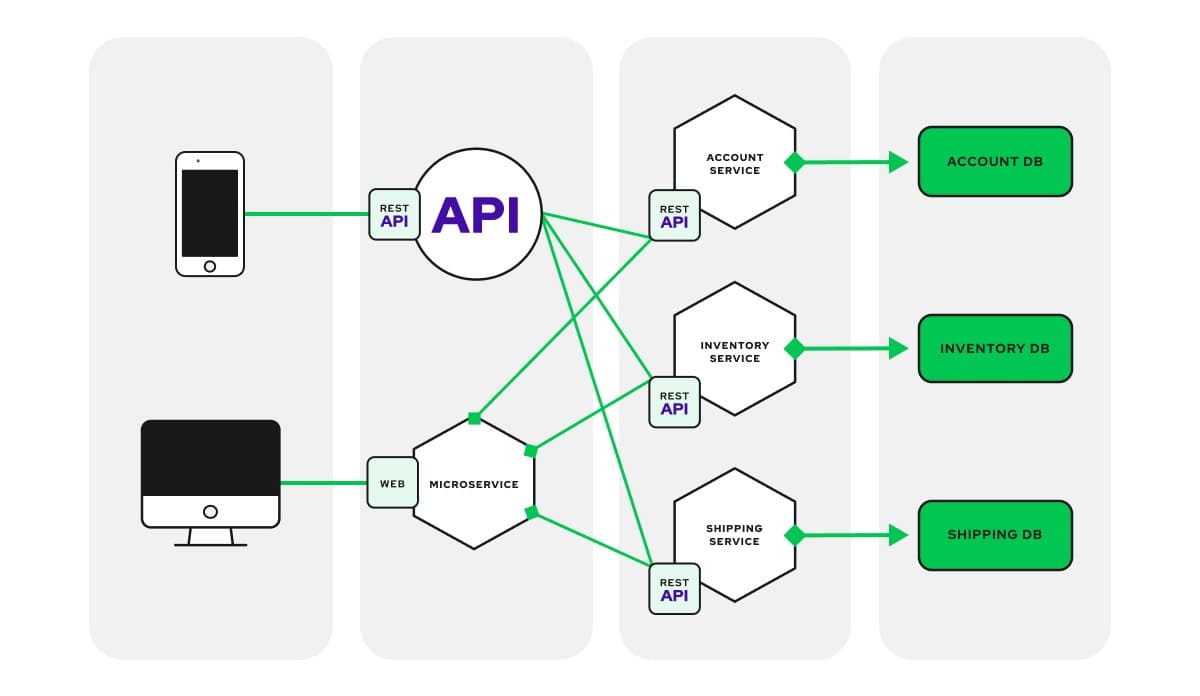Building Scalable Web Applications with Microservices Architecture

Introduction:
In today’s fast-paced digital world, web applications need to be able to scale, handle large volumes of traffic, and be flexible to changing requirements. Microservices architecture is one of the most powerful approaches to achieve these goals. In this blog, we will explore what microservices are, why they matter for scalability, and how you can implement a microservices architecture in your web application.
What Are Microservices?
Microservices architecture is an approach where a web application is broken down into smaller, independent services, each focused on a specific business function. Unlike monolithic applications, where the entire system is tightly coupled, microservices allow each component of the application to be developed, deployed, and scaled independently.
- Key Characteristics of Microservices:
- Independent and loosely coupled services
- Each service is responsible for a specific function (e.g., user management, payment processing)
- Communicate over lightweight protocols like HTTP/REST, gRPC, or message queues
Why Choose Microservices for Scalability?
Microservices enable organizations to build more scalable, resilient, and maintainable applications. Let’s break down some key benefits:
- Independent Scalability: Each service can be scaled individually based on demand, allowing more efficient resource utilization.
- Fault Isolation: If one service fails, it doesn’t bring down the entire application. This ensures better fault tolerance and uptime.
- Faster Development and Deployment: Teams can work on different services independently, allowing for faster development cycles and easier deployments.
- Technology Flexibility: Microservices allow you to choose the best technology stack for each service, giving you more flexibility to use the right tools for the job.
How to Build a Microservices Architecture for Web Applications:
- Identify Service Boundaries: Start by identifying the different functional components of your application that could be split into separate services. For example, a web app might have a user authentication service, a payment gateway service, and a product catalog service.
- Example:
- User Service: Manages user accounts and authentication.
- Payment Service: Handles payment transactions.
- Notification Service: Sends emails, SMS, or push notifications.
- Choose the Right Communication Protocols: Microservices need to communicate with each other, and the choice of communication protocol is critical. Most microservices use RESTful APIs (HTTP/JSON), gRPC (for high-performance communication), or message brokers like Kafka or RabbitMQ.
- Implement Data Management: Each microservice should ideally have its own database to ensure loose coupling. This pattern is known as Database per Service. Avoid shared databases as they introduce dependencies between services.
- Example:
- User Service: PostgreSQL
- Payment Service: MySQL or NoSQL (like MongoDB)
- Notification Service: Redis for caching messages
- Containerization with Docker: Use Docker to containerize each microservice. Containers encapsulate the application and its dependencies, making it easier to deploy and scale services independently.
- Example:
- Dockerize each service and use Docker Compose or Kubernetes to manage the containerized services.
- API Gateway: An API Gateway acts as a reverse proxy and single entry point for your microservices. It handles routing, load balancing, and security for the incoming requests. You can use tools like Nginx, Kong, or AWS API Gateway for this purpose.
- Implement CI/CD: Continuous Integration and Continuous Deployment (CI/CD) pipelines help automate the deployment of microservices. Tools like Jenkins, GitHub Actions, or CircleCI allow you to automate testing, building, and deploying each microservice independently.
Challenges of Microservices Architecture:
While microservices offer many advantages, they also come with challenges that you should be aware of:
- Complexity in Management: More services mean more complexity in managing, deploying, and monitoring each component.
- Data Consistency: Since each microservice has its own database, ensuring data consistency across services can be difficult.
- Network Latency: Microservices communicate over the network, so network latency can become a bottleneck, especially if there are many services involved.
- Increased Overhead: Monitoring and troubleshooting multiple services can be time-consuming and require advanced tools.
Best Practices for Microservices Architecture:
- Service Discovery: Use service discovery tools like Consul or Eureka to help services locate and communicate with each other dynamically.
- Logging and Monitoring: Implement centralized logging and monitoring (e.g., using ELK Stack, Prometheus, or Grafana) to keep track of system health and performance.
- API Versioning: Always version your APIs to ensure backward compatibility when making changes to a microservice.
- Event-Driven Architecture: Consider using an event-driven architecture with message queues (e.g., RabbitMQ, Kafka) to decouple services and allow asynchronous communication.
Real-World Example:
Let’s take a look at how a popular e-commerce platform like Amazon uses microservices to handle massive amounts of traffic and transactions:
- Product Service: Handles product catalog data.
- Order Service: Manages the shopping cart and order checkout.
- Payment Service: Processes payments.
- Shipping Service: Tracks orders and coordinates shipping.
Each service is independently deployable, scalable, and resilient, ensuring a smooth and responsive experience for millions of users.
Conclusion:
Microservices architecture is an excellent choice for building scalable and maintainable web applications. It enables teams to work autonomously, scale services independently, and adopt new technologies for each component. However, the complexity of managing multiple services, ensuring consistent data, and handling network latency are challenges to consider. By following best practices, leveraging modern tools, and focusing on automation, you can successfully implement a microservices architecture that grows with your business needs.
Call to Action:
Want to learn more about microservices or need help implementing them in your web application? Contact us today to explore how we can help you design and scale your next big project.